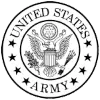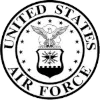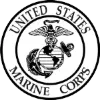





Available Civil 3D Instructor-Led Courses
Available Civil 3D On-Demand Courses
Virtual Live Instructor
Financing Available
Free Repeat
We offer private group training services for organizations looking to upskill their team members with a live-instructor.
Training options include:
Learn more about how Private Group Training from Business Computer Skills can help your team.
Civil 3D FAQ
What is Civil 3D
Autodesk Civil 3D is a civil engineering design and documentation software that supports Building Information Modeling (BIM) workflows. It's widely used by civil engineers, designers, and drafters to plan, design, and manage civil engineering projects. Civil 3D is primarily aimed at projects involving infrastructure, such as roads, highways, railroads, land development, water and sewer systems, storm water management, and environmental management.
Business Computer Skills offers Inventor training classes nationwide and online.
Key Features and Functionality of Autodesk Civil 3D:
1. Dynamic Model-Based Design
- BIM Integration: Civil 3D supports BIM workflows, meaning it creates intelligent, dynamic 3D models that are interrelated and update automatically when changes are made. If you change one part of the model (e.g., a roadway alignment), associated parts (such as profiles, cross-sections, and volume calculations) automatically adjust.
- Data Management: The software allows you to organize project data using surfaces, alignments, corridors, and networks. Each of these objects can be connected to create a comprehensive project model.
2. Terrain Modeling
- Surface Creation and Analysis: Civil 3D allows the creation of digital terrain models (DTMs) or surfaces from various data sources, such as survey data, point clouds, or LiDAR data. Surfaces are used to represent the existing and proposed ground conditions and can be analyzed for volumes, slopes, contours, and more.
- Grading Tools: Users can generate grading solutions to model site topography, drainage paths, or complex earthwork designs for land development projects.
3. Alignment and Profile Design
- Horizontal Alignments: Civil 3D enables the design of horizontal alignments, such as road centerlines, railway tracks, or pipe networks. These alignments can be constrained by curves, tangents, and transitions, and the software provides tools for complex curve design.
- Vertical Alignments (Profiles): Users can create profiles that represent the vertical aspect of an alignment. For instance, in a road design, a profile would show the changes in elevation over the length of the road, enabling the design of cuts, fills, and slopes.
4. Corridor Modeling
- Road and Highway Design: Civil 3D excels in creating corridor models, which are 3D representations of linear infrastructure (such as roads and highways). A corridor is generated by applying a typical cross-section (assembly) along a defined alignment and profile. These corridors adapt dynamically to changes in the alignment or profile.
- Intersections and Roundabouts: The software includes tools to automate the design of complex intersections, roundabouts, and other road configurations. These intersections update automatically when changes are made to the parent alignments.
5. Pipe Network Design
- Storm and Sanitary Sewer Networks: Civil 3D allows users to design and analyze stormwater and sanitary sewer systems. You can create both gravity and pressure pipe networks, set pipe sizes and elevations, and analyze flow based on design criteria.
- Hydraulic and Hydrologic Analysis: It integrates with external analysis tools like Autodesk Storm and Sanitary Analysis (SSA) for hydrological studies and stormwater management. This enables engineers to simulate and analyze drainage patterns, runoff, and capacity in the network.
6. Survey Data Management
- Survey Database: Civil 3D supports the collection and management of survey data, including points, traverses, and breaklines. It integrates with survey instruments and allows field-to-finish workflows.
- Topographic Maps: Surveyors can use the software to convert raw survey data into topographic surfaces, which can then be used to design or calculate earthwork quantities.
7. Quantity Takeoffs and Cost Estimation
- Earthwork Volumes: Civil 3D provides tools to calculate the cut-and-fill volumes needed for earthworks. These calculations can be dynamically linked to surface changes, ensuring accuracy when the design evolves.
- Material Quantities: Corridor modeling in Civil 3D can be used to extract quantities of materials like asphalt, concrete, and base layers. These quantities can be linked with costing data for accurate project estimates.
8. Plan Production and Documentation
- Dynamic Cross-Sections and Profiles: The software automatically generates cross-sections and profiles based on the 3D model, and these views update when changes are made to the design.
- Sheet Set Creation: Civil 3D has tools for automating the creation of plan and profile sheets, including road layouts, pipe networks, and grading plans. This is helpful for reducing manual drafting work and ensuring consistency across the project.
- Annotation and Labeling: Intelligent annotation tools ensure that labels (for contours, profiles, alignments, etc.) are dynamically linked to the objects they reference. Changes in the design update the labels automatically.
9. Collaboration and Data Sharing
- Civil 3D and AutoCAD Integration: Civil 3D is built on top of AutoCAD, so it includes all the drafting and design tools of AutoCAD, making it familiar to many users. Civil 3D objects like surfaces, alignments, and profiles can be displayed in 2D AutoCAD views.
- Data Shortcuts: Teams can work collaboratively on large projects by using data shortcuts. This allows team members to reference critical project data (like alignments or surfaces) without needing to work in the same drawing file.
- Cloud Integration: Civil 3D integrates with Autodeskís cloud services, enabling collaboration across teams and stakeholders in different locations. This supports a connected BIM workflow, allowing real-time data exchange between project partners.
10. Analysis and Simulation
- Stormwater Management: Civil 3D provides drainage design tools to handle stormwater runoff, pond design, and pipe network analysis. It includes the ability to model water flow and pressure through storm and sanitary sewers.
- Roadway Analysis: Tools for superelevation calculation, lane widening, and road design evaluation are included. The software can perform design checks to ensure roadways meet design criteria for safety and efficiency.
Typical Uses of Autodesk Civil 3D:
- Roads and Highways: Design and modeling of roads, including lane configurations, curbs, gutters, intersections, and signage.
- Land Development: Subdivision planning, grading design, utility placement, and stormwater management for residential or commercial projects.
- Railroads: Civil 3D is used to design railway alignments, profiles, and corridors for rail infrastructure.
- Utilities and Infrastructure: The software handles the design of underground utilities, water and sewer systems, and storm drainage.
- Environmental Projects: Civil 3D supports projects like flood control, environmental restoration, and land reclamation by providing terrain modeling and hydrologic tools.
Integration with Other Autodesk Products:
- Revit: Integration with Autodesk Revit for building and infrastructure projects that need both architectural and civil designs to coexist, such as when designing roads and utilities alongside buildings.
- InfraWorks: InfraWorks is used for early-stage, high-level conceptual design and analysis. Civil 3D can import and refine these conceptual designs into detailed construction models.
- Navisworks: Civil 3D data can be integrated with Navisworks for 4D simulation, clash detection, and project management.
Benefits of Using Civil 3D:
- Improved Efficiency: Automating many design tasks helps reduce errors and speeds up project delivery.
- Real-Time Updates: Dynamic links between project elements mean that when changes are made in one part of the design, all related parts are updated automatically.
- Accuracy and Precision: Civil 3Dís powerful modeling tools allow for accurate calculations of quantities, volumes, and design elements.
- BIM Collaboration: Supports collaborative workflows across disciplines (e.g., structural, architectural, environmental, and civil), making it easier to coordinate designs.
In summary, Autodesk Civil 3D is a comprehensive solution for civil engineering design, offering advanced tools for terrain modeling, alignment design, pipe networks, corridor modeling, and more. Its integration with BIM workflows makes it highly effective for managing complex infrastructure projects, from planning to construction.
In 2024, Autodesk offers several certification paths for Autodesk Civil 3D, primarily aimed at professionals in civil engineering and infrastructure design:
- Autodesk Certified User (ACU): This entry-level certification is intended for students and beginners. It validates foundational skills in Autodesk Civil 3D, such as basic workflows and tools, making it a good starting point for those new to the software.
- Autodesk Certified Professional (ACP) - Civil 3D for Infrastructure Design: This is a more advanced certification that demonstrates your proficiency in handling complex infrastructure projects. The exam covers critical Civil 3D skills such as working with points, parcels, surfaces, alignments, profiles, corridors, and pipe networks. This certification is designed for professionals with experience and those who can solve complex workflow challenges.
Both certifications are valuable in showcasing your abilities to potential employers, helping you stand out in a competitive market. The certifications are typically valid for 2 to 3 years, after which you would need to retake the exam to maintain your certification.
For more information, visit the official Autodesk certification page here.
Jobs that Use Autodesk Civil 3D
1. Civil Engineer
- Responsibilities: Design and oversee infrastructure projects such as roads, highways, bridges, and stormwater management systems.
- Civil 3D Usage: Engineers use Civil 3D for designing, drafting, and creating 3D models for projects.
2. Transportation Engineer
- Responsibilities: Plan, design, and manage transportation systems such as highways, railways, airports, and public transit.
- Civil 3D Usage: Used for designing roadway alignments, grading, and analyzing transportation networks.
3. Land Development Engineer
- Responsibilities: Design residential, commercial, and industrial land development projects including grading, drainage, and utility systems.
- Civil 3D Usage: Employed for site grading, parcel creation, and planning road layouts.
4. Surveyor
- Responsibilities: Measure land areas, distances, and angles to support construction and development projects.
- Civil 3D Usage: Surveyors use Civil 3D for importing survey data, creating terrain models, and plotting contours.
5. Drafter/Designer
- Responsibilities: Assist civil engineers by creating detailed technical drawings, plans, and schematics for infrastructure projects.
- Civil 3D Usage: Used for preparing construction documentation and detailed plans.
6. Water Resources Engineer
- Responsibilities: Design and analyze systems related to water supply, wastewater, drainage, and flood control.
- Civil 3D Usage: Helpful for designing drainage systems, stormwater management, and analyzing hydraulic networks.
7. Geotechnical Engineer
- Responsibilities: Design foundations, earthworks, and retaining structures.
- Civil 3D Usage: Used for visualizing ground conditions and designing earthworks.
8. Environmental Engineer
- Responsibilities: Design solutions for pollution control, waste management, and remediation of contaminated sites.
- Civil 3D Usage: Used for environmental site design, grading, and drainage analysis.
9. Urban Planner
- Responsibilities: Plan and design urban spaces, infrastructure, and land use while considering environmental and community factors.
- Civil 3D Usage: Helps with terrain analysis, infrastructure design, and planning land use patterns.
10. Construction Manager
- Responsibilities: Oversee the construction of infrastructure projects, ensuring they meet design specifications, budgets, and schedules.
- Civil 3D Usage: Used for reviewing designs, tracking project progress, and visualizing construction phases.
11. GIS Analyst
- Responsibilities: Analyze and manage spatial data to support infrastructure planning and development.
- Civil 3D Usage: Often integrates with GIS software for creating and analyzing geospatial data in civil projects.
We offer live-instructor group training classes for your team.
Upskill your team from the comfort of your office or online.
Benefits of Group Training Include:
- Experienced Professional Instructor Trains Your Team
- Content Focused On Your Team's Needs
- Convenient Scheduling and Class Setup
- Significant Per/Student Cost Savings
- Online, On-Site and Blended Options Available
Boulder Location FAQ
Boulder is an interesting place. Here is some information to help you learn more about Boulder
Ten interesting facts about Boulder, CO
- Boulder is renowned for its stunning natural setting at the base of the Rocky Mountains (~0.0 miles from the address).
- The city is home to a high concentration of research institutions and tech startups (~0.0 miles).
- Boulder boasts over 300 days of sunshine per year (~0.0 miles), making it ideal for outdoor activities.
- The iconic Flatirons rock formations provide a dramatic backdrop (~0.0 miles) to the cityscape.
- Boulder has a rich history in environmental sustainability and green living (~0.0 miles).
- The University of Colorado Boulder is one of the top public universities in the nation (~0.0 miles).
- Boulder was one of the first cities to embrace organic farming and local food movements (~0.0 miles).
- The city hosts numerous festivals and cultural events throughout the year (~0.0 miles).
- Boulder has been ranked multiple times as one of the healthiest cities in the United States (~0.0 miles).
- Boulder residents enjoy an active lifestyle with miles of trails and parks (~0.0 miles).
Ten Fun things to do in Boulder, CO
- Visit the scenic Chautauqua Park (900 Baseline Road, ~1.2 miles from 1434 Spruce Street) – Enjoy hiking and panoramic views of the Flatirons.
- Stroll along Pearl Street Mall (Pearl Street, ~0.8 miles) – A vibrant pedestrian street with shops and street performances.
- Explore Boulder Creek Path (Boulder Creek, ~1.0 mile) – A lovely trail alongside the creek ideal for walking or biking.
- Discover the Boulder Museum of Contemporary Art (2001 Arapahoe Avenue, ~1.5 miles) – Showcasing modern art exhibits.
- Tour the University of Colorado Boulder Campus (CU Boulder, ~2.0 miles) – A historic campus with beautiful architecture.
- Visit the Fiske Planetarium (Cecil B. Day Science Center, ~2.1 miles) – Experience engaging astronomical shows.
- Relax at the Boulder Dushanbe Teahouse (1770 13th Street, ~1.7 miles) – A unique teahouse with intricate hand-carved details.
- Enjoy nature at NCAR (National Center for Atmospheric Research, ~3.0 miles) – Tour the facility and learn about climate science.
- Cycle the Boulder Loop (Local bike trails, ~1.2 miles) – A favorite route for cyclists of all levels.
- Sample local craft at a Boulder brewery tour (various locations, ~1.5 miles) – Explore award-winning local brews.
Ten Restaurants near Boulder, CO
- The Kitchen (2600 14th Street, ~0.5 miles) – A farm-to-table restaurant offering seasonal American dishes.
- Oak at Fourteenth (1414 14th Street, ~0.7 miles) – Contemporary American fare with local ingredients.
- Santorini (1925 Pearl Street, ~0.8 miles) – Mediterranean flavors in a cozy, vibrant setting.
- Blackbelly Market (1607 Conestoga Street, ~1.0 mile) – A butcher shop and eatery featuring house-made charcuterie.
- Flagstaff House (600 Flagstaff Road, ~2.5 miles) – Upscale dining with spectacular views of the valley.
- Zoe Ma Ma (1845 13th Street, ~0.6 miles) – Casual eatery serving creative Asian-inspired dishes.
- Frasca Food & Wine (500 13th Street, ~0.9 miles) – Northern Italian cuisine in an elegant setting.
- Mountain Sun Pub & Brewery (2035 13th Street, ~1.1 miles) – Local pub known for craft brews and hearty meals.
- Franco (1600 Pearl Street, ~0.8 miles) – Italian classics served in a contemporary space.
- New Belgium Hub (1555 13th Street, ~0.7 miles) – A vibrant spot featuring local beers and creative snacks.
Ten Hotels near Boulder, CO
- St Julien Hotel & Spa (1335 Pearl Street, ~0.6 miles) – A luxury hotel with a full-service spa and elegant rooms.
- Boulder Marriott (1700 28th Street, ~1.8 miles) – Contemporary accommodations with modern amenities.
- The Boulderado (2115 14th Street, ~1.2 miles) – Historic hotel with charming, vintage decor.
- Hotel Boulderado (2115 14th Street, ~1.2 miles) – Iconic lodging offering timeless elegance.
- Hyatt Place Boulder (1660 Pearl Street, ~0.9 miles) – Modern hotel with spacious rooms and city views.
- Residence Inn by Marriott (2025 14th Street, ~1.0 mile) – Extended-stay hotel with home-like amenities.
- Embassy Suites Boulder (1800 15th Street, ~1.0 mile) – Suite-style accommodations with complimentary breakfast.
- Best Western Plus Boulder Inn (1171 13th Street, ~0.5 miles) – Budget-friendly option with modern comforts.
- Airbnb Boutique Homes (Various addresses, ~0.7 miles) – Curated local stays with unique character.
- Staypineapple, The Mansion on Pearl Street (1395 Pearl Street, ~0.8 miles) – Boutique hotel with upscale amenities.
Below is a list of local libraries in the area that may also provide computer training near Boulder, Colorado:
Boulder Public Library
1001 Arapahoe Avenue
Boulder, CO 80302
303-441-3100
Boulder Public Library
Carnegie Branch For Local History
1125 Pine Street
Boulder, CO
303-441-3110
Carnegie Branch For Local History
George Reynolds Branch
3595 Table Mesa Drive
Boulder, CO
303-441-3120
George Reynolds Branch
Meadows Branch Library
4800 Baseline Road
Boulder, CO
303-441-4390
Meadows Branch Library
We offer live-instructor group training classes for your team.
Upskill your team from the comfort of your office or online.
Benefits of Group Training Include:
- Experienced Professional Instructor Trains Your Team
- Content Focused On Your Team's Needs
- Convenient Scheduling and Class Setup
- Significant Per/Student Cost Savings
- Online, On-Site and Blended Options Available
Learn Civil 3D from a Professional Instructor and take your skills to the next level
Civil 3D is a civil infrastructure design and documentation software software appliaction. Civil 3D is used to produce road and highway designs, rails designs and site designs.
Business Computer Skills offers a variety of Civil 3D training classes in Boulder, CO. Get the professional training you need to take your Civil 3D skills to the next level.
Whether you want to learn Civil 3D basics, or become a master of creating professional quality Civil 3D designs, we have the right course for you.
Learn About:
- AutoCAD Civil 3D Interface
- Civil 3D Project Management
- Parcels
- Survey
- Surfaces
- Alignments
- Profiles
- Corridors
- Grading
- Pipe Networks
- Quantity Take Off/Sections
- Plan Production

Hands On
Professional Trainers
Convenient Scheduling
Small Class Sizes
Affordable Courses
Authorized Content
Testimonials
This was the class I needed.
The instructor Jeff took his time and made sure we understood each topic before moving to the next. He answered all of our questions, and I don't know about the rest of the students, but was very pleased with this experience.
I finally understand how to use Excel.
-Amanda T (Yale New Haven Hospital).
Great class!
We were able to cover a lot of information in one day without getting overwhelmed.
-Maria R (Microsoft).
Boulder, CO Location Details
We hold our Civil 3D instructor-led training classes for the Boulder area at the following location:
Boulder Training Center
Boulder, CO
This location also serves the following areas around Boulder, Colorado:
Additional Civil 3D civil3dTraining Locations in Colorado
Below is a list of local libraries in the area that may also provide Civil 3D training near Boulder, Colorado:
1001 Arapahoe Avenue
Boulder, CO 80302
303-441-3100
Boulder Public Library
Carnegie Branch For Local History
1125 Pine Street
Boulder, CO
303-441-3110
Carnegie Branch For Local History
George Reynolds Branch
3595 Table Mesa Drive
Boulder, CO
303-441-3120
George Reynolds Branch
Meadows Branch Library
4800 Baseline Road
Boulder, CO
303-441-4390
Meadows Branch Library

